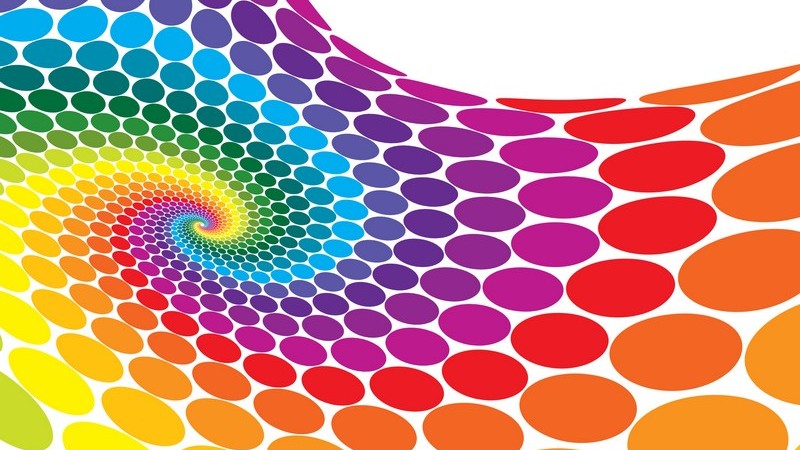The Lüscher Color Test, developed by Swiss psychologist Max Lüscher in 1947, assesses the mental and physical state of an individual, determining their performance, resilience, and communicative tendencies through color choices. It claims to contribute to genuine well-being and can influence preferences, including fashion choices.
Here are the key points about the test:
- Online Availability: The test is available online, but users should note that browser displays may not precisely replicate the original colors due to fine shading differences.
- Psychological Insights: By selecting colors, individuals can uncover personal conflicts, revealing 34 partly unconscious personality aspects. Color choices offer honest insights, avoiding potential distortions present in questionnaire responses.
- Test Evaluation: The test results provide indications of personality assessment and comprehensive recommendations for avoiding future stressors.
- Max Lüscher: Max Lüscher, currently residing in Lucerne, is a philosopher and psychologist who integrated his passion for colors into his work. His color test finds applications in clinical diagnostics and various industries.
- Color Psychology: Lüscher associates basic orientations with colors, such as Blue for contentment and connection, Green for self-esteem and inner control, Red for confidence and drive, and Yellow for unfolding potential and future expectations.
- Test Administration: Depending on the context, the test may involve eight to 73 color cards. It’s crucial to interpret results as reflections of the current emotional state, not as fixed personality traits.
- Procedure: Test-takers view colors under good lighting, and the browser should ideally provide accurate color representation. Participants should neutrally accept colors without imagining more vibrant shades.
- Card Arrangement: The participant arranges cards in a sequence based on personal preference, ranking from the favorite card on the left to the least favorite on the outer right. After flipping the cards, the numbers on the back are noted.
- Interpretation: The resulting number combinations correspond to a brief evaluative text, available in associated literature or supplementary online materials.
The Lüscher Color Test is valuable for decisions involving color, offering insights into one’s emotional state and preferences.

Sources: https://www.paradisi.de/mode/farbberatung/luescher-farbtest/
Hard-Edge Painting (1950er Jahre)
„Hard Edge“ is an art movement closely related to Concrete Art, primarily developed in North America. It represents an evolution of color field painting, distinguishing itself by sharply defined edges between color fields, eliminating transitional areas. In essence, it emerged as an offshoot of color field painting, with the critical distinction lying in the clear separation of colors without any gradients. To illustrate, consider a Hard Edge work by Ellsworth Kelly and a color field painting by Mark Rothko.

Originating in the late 1940s, the movement’s roots can be traced to artists like Barnett Newman, Ad Reinhardt, Mark Rothko, and Clyfford Still, who laid the foundation for color field painting. Departing from the gestural and expressive brushstrokes of action painters, they arranged monochromatic color fields on the canvas. In the 1950s, Hard Edge developed as a direct successor to color field painting.
The term „Hard Edge,“ coined by art critic Jules Langsner in the late 1950s, emphasizes the defining feature of this style—sharply delineated contour lines between color fields. Within these fields, one often observes simple geometric shapes, highlighting the affinity with geometric and Concrete Art. Similar to color field painting, Hard Edge emphasizes the flatness of executed color fields, with a noticeable absence of visible brushstrokes. Consequently, the artist’s personal touch is rarely discernible.
Notable figures in the Hard Edge movement during its zenith in the late 1950s and the 1960s include American painters Al Held, Ellsworth Kelly, Kenneth Noland, and Frank Stella. Many of these artists were featured in the influential exhibition „Post Painterly Abstraction,“ curated by Clement Greenberg in 1964 at the Los Angeles County Museum. This association often leads to the classification of Hard Edge as a variant of Post Painterly Abstraction.

Color Field Painting
Color Field Painting emerged in the United States around 1948 and is characterized by paintings featuring monochromatic color fields arranged within the picture space. Key figures in this art movement include Barnett Newman, Mark Rothko, Ad Reinhardt, and Clyfford Still. The central mechanism of these paintings is often associated with the concept of the sublime, aiming to evoke feelings of meditation and transcendence. Artists, particularly Barnett Newman, designed their works to be viewed from a close standpoint, encouraging contemplative immersion in the artwork. Newman, in his essay „The Sublime is now“ (1948), also reflected on the theoretical aspects of the sublime.
Considered part of Abstract Expressionism, Color Field Painting, like Action Painting, is regarded as an expression of the New York School. Despite apparent differences, such as the absence of defined backgrounds and the use of large formats, both styles share features like the principle of hierarchical „All over.“
Within Color Field Painting, artists approached their work differently. For instance, Mark Rothko placed softly delineated color fields on monochromatic backgrounds, creating an inherent sense of movement. In contrast, Barnett Newman used clearly defined color fields in his paintings. Newman’s series „Who’s Afraid of Red, Yellow and Blue I-IV“ (1966-70) became iconic in the Color Field genre. Ad Reinhardt’s „Black Paintings,“ created between 1954 and 1967, pushed the boundaries of perceptibility of color and form values.
Two significant exhibitions played a role in positioning Color Field Painting: Clement Greenberg’s curated exhibition „Post Painterly Abstraction“ in 1964 and the 1965 exhibition that brought together painters like Gene Davis, Thomas (Tom) Downing, Morris Louis, Howard Mehring, Kenneth Noland, and Paul Reed, collectively known as the „Washington Color Painters.“
Color Field Painting flourished in the 1950s and 1960s, exerting a significant influence on subsequent art movements, including Hard Edge, Signalism, and Minimal Art.

Sources: https://www.kettererkunst.de/lexikon/color-field-painting.php
https://www.suedwestgalerie.de/kunstlexikon/kunstgeschichte/farbfeldmalerei#kunstgeschichte